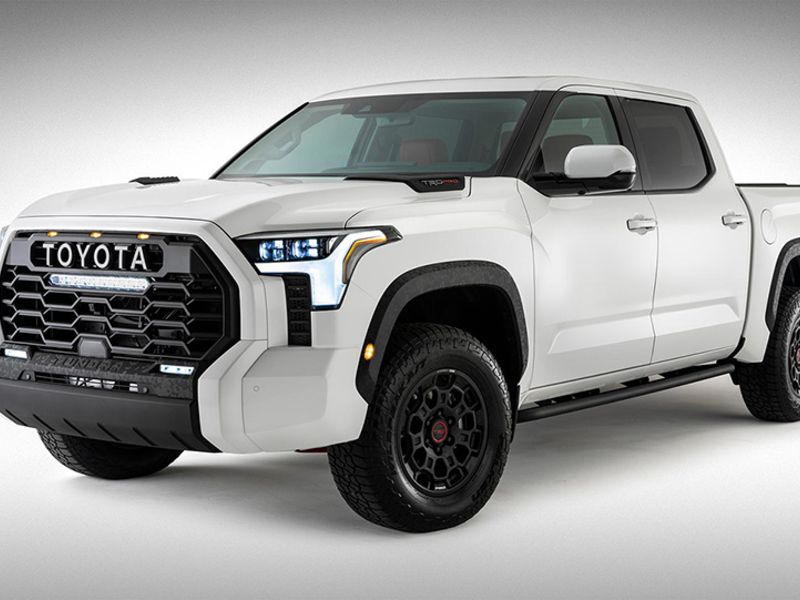
Toyota’s elaborate, peek-a-boo, slow-motion reveal plan for the redesigned 2022 Tundra was blown up late last week when someone posted undisguised images of the pickup’s exterior online that were photographed off of a screen presentation.
A few hours after the first images appeared, the company surrendered to the obvious and posted a full image of the next-generation full-size pickup on its Twitter account, adding only “Some people don’t know how to keep a secret.”
But as someone who’s seen the next-generation Tundra up close — I and about 75 other journalists were shown a full-scale fiberglass model of a TRD Pro Tundra this month at the company’s headquarters in Plano, Texas, and sworn to secrecy — I can tell you that neither image really does the next-gen Tundra justice.
With no real scale for the eye to measure against in either the leaked or official image, you’ll have to take my word that Toyota’s first redesign of the Tundra since 2007 is big, really big. And that, to me, is a missed opportunity.
Rather than try to out-Detroit the Detroit 3 on what is arguably their home turf by building the Canyonero of pickups, Toyota could have gone in the other direction and shrunk down the Tundra, dramatically improving its aerodynamics and fuel economy and setting itself apart in the segment.
A half-ton pickup with a hybrid powertrain that will fit in a standard garage and is easier to park than competitors may or may not be a winning formula, but it is one thing in that important segment: different. And that to me would seem like a good thing to be for Toyota.
In the full-size pickup segment, the Toyota Tundra is a perennial also-ran, locked in fifth place behind the Ford F-Series, Chevrolet Silverado, Ram and the GMC Sierra, and ahead of the Nissan Titan. From 2010 to 2020 (inclusive), the Tundra averaged annual U.S. sales of 108,986, what would be considered a respectable level for most vehicles — except that it pales against the average volume of every other full-size pickup, sans the Titan. Granted, Toyota has just the half-ton model going up against the combined sales of half-, three-quarter-ton and larger pickups and chassis cab offerings from Ford, GM and Ram.
There are a number of long-term reasons to argue for Toyota going smaller with the Tundra, including regulatory pressures to improve fuel economy and the company’s carbon-neutral-by-2050 pledge.
The big argument against it is that’s likely not what Toyota customers think they want — at least not those currently buying the Tundra. But let’s be honest: Every full-size pickup on the market today is bloated and oversized. Automakers aren’t complaining about the trend, though, because those bloated and oversized pickups sell at bloated and oversized prices, with commensurate levels of profit, and like it or not, that’s why any of them are in business.
Toyota had 14 years to consider where to take the next-generation Tundra, and we don’t yet know for sure all that the vehicle will be able to do once it reaches the marketplace later this year. But at least from my vantage point — which admittedly is about halfway up that Freightliner-sized grille — it would have been interesting if Toyota had chosen a different path.

